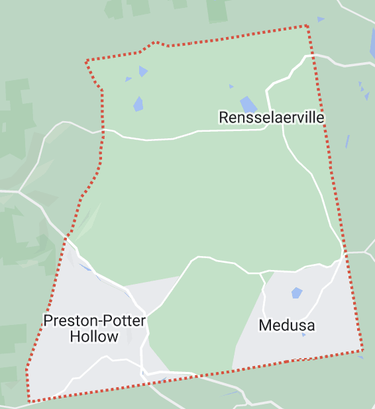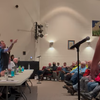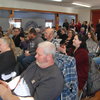Time for ‘rubber to hit the road’ on dilapidated properties, R’ville lawyer says
RENSSELAERVILLE — The Rensselaerville Town Board is figuring out how to handle what has become a backlog of dilapidated properties in the town two years after it updated its building codes to address them.
Supervisor John Dolce said at the board’s June 13 meeting that he has a list of 24 properties, including one that has a building with a fallen tree on it, plus a large number of vehicles, 55-gallon drums, and large trash containers on the premises that he said has him “really fearful.” He could not immediately be reached by The Enterprise for that property’s location.
Dolce said that he and building inspector Tim Lippert have visited some properties and will soon get around to all of them, and had even brought the Department of Environmental Conservation out to see the particularly problematic one. However, the department said it was ultimately a local matter.
The DEC could not immediately provide more details before publication.
Town attorney William Ryan said that he was “astounded that DEC sort of said that it’s your problem, but that’s OK. I think we need to have the rubber hit the road now” and initiate the town’s process for unsafe properties.
In 2022, the town board adopted its uniform code local law, which says that, when a property has been determined to be potentially unsafe by the town’s building inspector, he or she must conduct a formal inspection and give his written recommendation to the town board for how to deal with unsafe elements, whether they be structures or equipment.
Then, the board will consider a resolution that formally declares the property unsafe and deliver a notice to the property owner, who then will have 60 days to complete whatever corrective action is necessary. If the owner fails to comply, the town will appoint professional third parties to conduct a survey and issue a report that then gives the town board the ability to kick the matter to the New York State Supreme Court.
“All costs and expenses incurred by the Town in connection with the proceedings to remove or secure, including the cost of actually removing said building or structure, shall be assessed against the land on which said buildings or structures are located and file a lien if not paid in full,” the law says.
Deputy Supervisor Brian Wood acknowledged that he was “torn” on the issue, because, while he agrees that there shouldn’t be properties in the state of the one described, “I’m going to be dead set against picking on one property” when there are many that warrant action.
“I also think that, before we open Pandora’s box, we’ve got to make sure that we can pay for it,” he said. “I’m all about [making] a statement, but we’ve got to be able to pay for it … It’s fine to say that we’re going to put a judgment against them or whatever, but if we don’t get that money back, now we’re putting the cleanup of these properties on the backs of the citizens.”
Returning to his point that the board can’t single out one property, Wood said that the town could deal with properties one at a time, “but we can’t go after one person and be like, all right, we blew our wad on one and can’t go after the other 23. That’s just not fair.”
“The sad part,” Dolce replied, “is this problem didn’t just happen. It’s been like that for decades, and the town ignored it for decades.” The town has been “going after this guy” since August of 2022, Doce said, and he’s worried the total cleanup cost for that property alone could be half-a-million dollars.
Figuring then that cleaning up the five worst properties in the town could easily add up to a million dollars, Wood wondered if other towns had been in similar circumstances, but then said that “the benefit of other towns is they probably stay on top of it so they don’t have 24 properties they have to tackle all at once.”
Ryan said that the board could pay an engineer to file a report that includes a cost estimate. He said he doesn’t know what the engineer would cost, but that it would be “foolhardy” to “go blindly down this road without having investigated it” — noting that the town doesn’t, for instance, know what’s in the 55-gallon drums — and that an engineer’s report will allow them to make an “intelligent decision.”
Dolce said that he would get an estimate on the cost of an engineer before the board moved on to other business.



